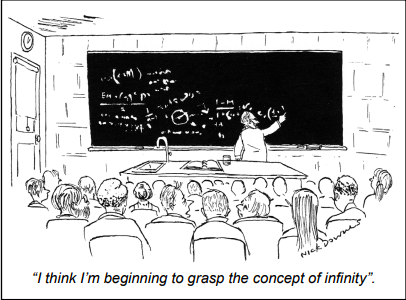1.1: Communication Gap in Science
- Page ID
- 55472
\( \newcommand{\vecs}[1]{\overset { \scriptstyle \rightharpoonup} {\mathbf{#1}} } \)
\( \newcommand{\vecd}[1]{\overset{-\!-\!\rightharpoonup}{\vphantom{a}\smash {#1}}} \)
\( \newcommand{\id}{\mathrm{id}}\) \( \newcommand{\Span}{\mathrm{span}}\)
( \newcommand{\kernel}{\mathrm{null}\,}\) \( \newcommand{\range}{\mathrm{range}\,}\)
\( \newcommand{\RealPart}{\mathrm{Re}}\) \( \newcommand{\ImaginaryPart}{\mathrm{Im}}\)
\( \newcommand{\Argument}{\mathrm{Arg}}\) \( \newcommand{\norm}[1]{\| #1 \|}\)
\( \newcommand{\inner}[2]{\langle #1, #2 \rangle}\)
\( \newcommand{\Span}{\mathrm{span}}\)
\( \newcommand{\id}{\mathrm{id}}\)
\( \newcommand{\Span}{\mathrm{span}}\)
\( \newcommand{\kernel}{\mathrm{null}\,}\)
\( \newcommand{\range}{\mathrm{range}\,}\)
\( \newcommand{\RealPart}{\mathrm{Re}}\)
\( \newcommand{\ImaginaryPart}{\mathrm{Im}}\)
\( \newcommand{\Argument}{\mathrm{Arg}}\)
\( \newcommand{\norm}[1]{\| #1 \|}\)
\( \newcommand{\inner}[2]{\langle #1, #2 \rangle}\)
\( \newcommand{\Span}{\mathrm{span}}\) \( \newcommand{\AA}{\unicode[.8,0]{x212B}}\)
\( \newcommand{\vectorA}[1]{\vec{#1}} % arrow\)
\( \newcommand{\vectorAt}[1]{\vec{\text{#1}}} % arrow\)
\( \newcommand{\vectorB}[1]{\overset { \scriptstyle \rightharpoonup} {\mathbf{#1}} } \)
\( \newcommand{\vectorC}[1]{\textbf{#1}} \)
\( \newcommand{\vectorD}[1]{\overrightarrow{#1}} \)
\( \newcommand{\vectorDt}[1]{\overrightarrow{\text{#1}}} \)
\( \newcommand{\vectE}[1]{\overset{-\!-\!\rightharpoonup}{\vphantom{a}\smash{\mathbf {#1}}}} \)
\( \newcommand{\vecs}[1]{\overset { \scriptstyle \rightharpoonup} {\mathbf{#1}} } \)
\( \newcommand{\vecd}[1]{\overset{-\!-\!\rightharpoonup}{\vphantom{a}\smash {#1}}} \)
Cholestyramine lowered circulating low‑ density‑lipoprotein apoprotein by doubling (P < 0.01) its fractional clearance via the receptor path. Sentences like this are clear and fascinating to scientists. Nonscientists react differently but can’t escape the jargon. Even the morning yogurt is described as keto-friendly, gluten-free, probiotic, has L. acidophilus.
There’s a growing need for scientists to communicate their knowledge to the public. But nonscientists are often uneasy about science and technology. The uneasiness is perhaps like that felt in the past with “unnatural” achievements— traveling by air, vaccinations, splitting atoms— but is probably greater with today’s wider gap between science’s high level of achievements and the public’s low level of scientific literacy. When the Wright brothers took off from the ground, most people could reasonably assess the bright and dark sides of this achievement. With today’s gene editing, the situation is far different.

Nonscientists need some basic knowledge as a starting point. A best‑selling book on diet and health claimed that improperly combined foods (e.g., meat and bread) aren’t properly digested and thereby produce toxic wastes that contribute to obesity. Anyone with a basic knowledge of how the body works recognizes this as nonsense. Meat and bread are well digested, whether eaten together or separately. Excess calories—not “toxic wastes”— cause obesity.
Scientists can’t easily counter such nonsense if listeners don’t know the basics of how the body works. Imagine a scientist sitting beside an exuberant best‑selling author and saying, “Let me first explain the physiology of digestion and how the body turns food into fat.” A basic knowledge of science is the best defense against being misled and misinformed.
One would think that science would best be taught by scientists. But most scientists have a hard time teaching general audiences. The same qualities that make them good scientists—a compulsion to be exact, the ease with which they understand science, concern with detail, and unbridled enthusiasm— can cause them to lose their audiences with floods of information presented in technical terms.
For example, linoleic acid is a fat and an essential nutrient. Speaking to a general audience, the term essential fat is a friendly substitute for linoleic acid. It’s hard for scientists to make this substitution because essential fat is ambiguous, whereas linoleic acid isn’t. It’s hard for scientists to communicate what they know to the public. When scientists can’t be lengthy and exact, they tend to simplify to such an extent that the information isn’t very useful. It’s hard to strike a balance between overwhelming detail and oversimplification.
Understanding today’s science isn’t easy. You need to know some physics to understand chemistry, some chemistry to understand physiology, and so on. Nonscientists, recalling their own stress with science and math classes, know that when you don’t learn the early stuff, it’s nearly impossible to understand the more complex stuff that follows. An upper‑division course in biochemistry has

more prerequisites than an upper‑division course in history, sociology, or English.
Presenting science and physiology in the context of nutrition makes the science more palatable (pardon the pun). Nutrition as a scientific discipline overlaps many fields in which we may already have an interest, such as child development, anthropology, psychology, agriculture, history, economics, or marketing. Many of us are interested in nutrition simply because we want the best diet for our own health and fitness. Let’s start with a bit of nutrition history.


